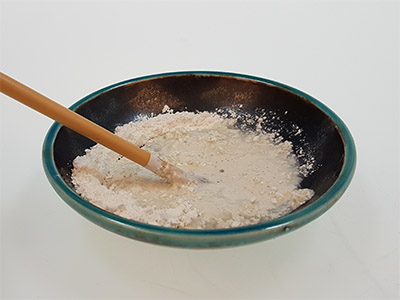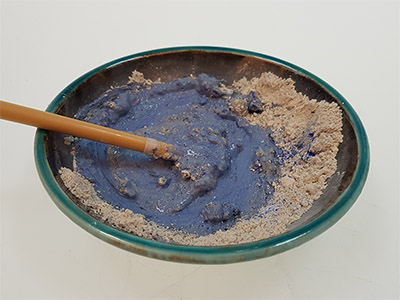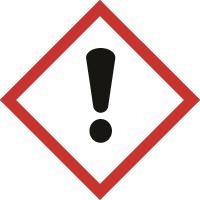Usage
Pehatine 209 is long-lasting, safe, and easy to use for:
- Glazes, engobes/clay slips, pigments, and oxides
- Rehydrating existing, dried glazes
- Even with multiple, if dry, layers.
Versatile in Application
Pehatine 209 can be used on both fired and unfired ware.
It is suitable for all temperatures – earthenware, stoneware, and porcelain.
Working with Pehatine 209 is easy.
Advice: Mix one part Pehatine with two parts water. Stir this into the glaze powder. The mixture can then be applied with both a wide brush and a fine brush on earthenware, clay, or porcelain.
Basic Recipe
1 kg powder + 0.5 l Pehatine + 1 l water = result
Making Pehatine for other recipes:
0.5 l Pehatine + 1 l water (= prepared Pehatine)
Brush Glaze
Ratio brush glaze and prepared Pehatine is 1:1
Prepared Pehatine means 1 part Pehatine to 2 parts water.




Color Pigments/Oxides
Ratio with prepared Pehatine 1:1
Can be further diluted with water.




Ceramic Paint
Ratio in units: 2 glaze, 1 pigment, 5 prepared Pehatine.
Prepared Pehatine means 1 part Pehatine to 2 parts water.
Colored Slurry, consisting of kaolin, pigment/oxide
Ratio with prepared Pehatine 1:1
Can be further diluted with water.




Colored Clay
Ratio in units: 2 pigment, 3 kaolin, 2 clay powder half fat, 2 glaze, pinch of talc and bentonite, 2 prepared Pehatine.
Prepared Pehatine means 1 part Pehatine to 2 parts water.








Ball of (100 grams) clay, knead until uniform mass, colored clay.
Dried Glaze
Add prepared Pehatine.
Prepared Pehatine means 1 part Pehatine to 2 parts water.




Mounting Slurry
Clay with Pehatine, stir and mount. Strong and adhesive.




Powder made with Pehatine versus powder made with only water.
The difference in sedimentation of the prepared powder after 2 hours.



 Pehatine 209 contains 0.05% preventol. This is a preservative used by every glaze manufacturer in Europe in many prepared glazes. Due to changes in European legislation, we are required to display this symbol from July 1, 2017. (it may cause a sensitive reaction on the skin) (no known cases)
Pehatine 209 contains 0.05% preventol. This is a preservative used by every glaze manufacturer in Europe in many prepared glazes. Due to changes in European legislation, we are required to display this symbol from July 1, 2017. (it may cause a sensitive reaction on the skin) (no known cases)
Want to know more? Download the safety data sheet